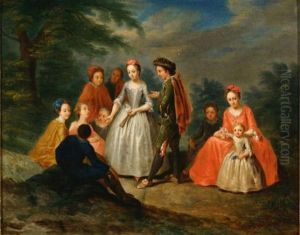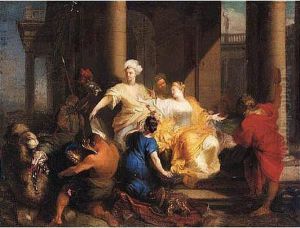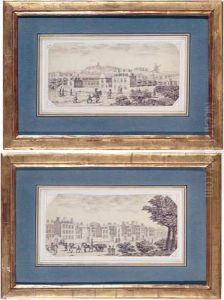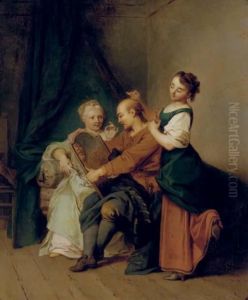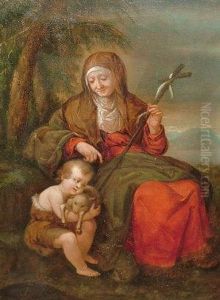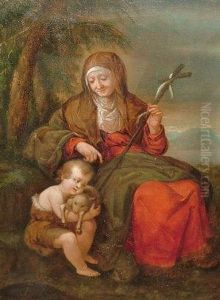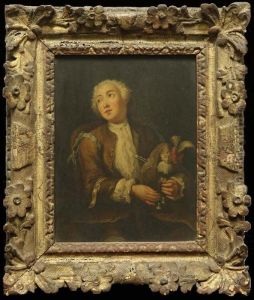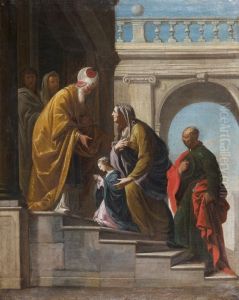Sebastien Ii Leclerc Paintings
Sébastien Leclerc II was a French artist and engraver, born in Paris in 1676, into a family with a strong artistic heritage. His father, Sébastien Leclerc I (1637–1714), was also a notable engraver and draftsman, which meant that Leclerc II was exposed to the world of art from a very young age. The artistic environment of his family played a significant role in shaping his future career.
Leclerc II received his initial training from his father and was later influenced by the works of other prominent artists of the period. He became particularly known for his skill in engraving and etching, following in the footsteps of his father, who had been a professor of design at the Jardin du Roi. Leclerc II's works often depicted architectural subjects, landscapes, and decorative themes, and he was adept at capturing the intricate details of his subjects with precision and clarity.
Throughout his career, Leclerc II worked for various clients, including members of the French court and the Parisian art market. His engravings were well-received, and he contributed to the dissemination of the French classical style of his time. Although he was less innovative than his contemporaries, his work represents the artistic styles and preferences of the early 18th century in France.
Leclerc II was also involved in the production of illustrations for books, an important medium for engravers to showcase their work and reach a broader audience. These illustrations often required a keen understanding of narrative and the ability to translate stories into compelling visual imagery.
Sébastien Leclerc II's contributions to the field of engraving were recognized during his lifetime, and his works continue to be of interest to art historians and collectors. He died in 1763, leaving behind a body of work that not only reflects his personal skill but also provides insight into the artistic climate of France during the early 18th century.
